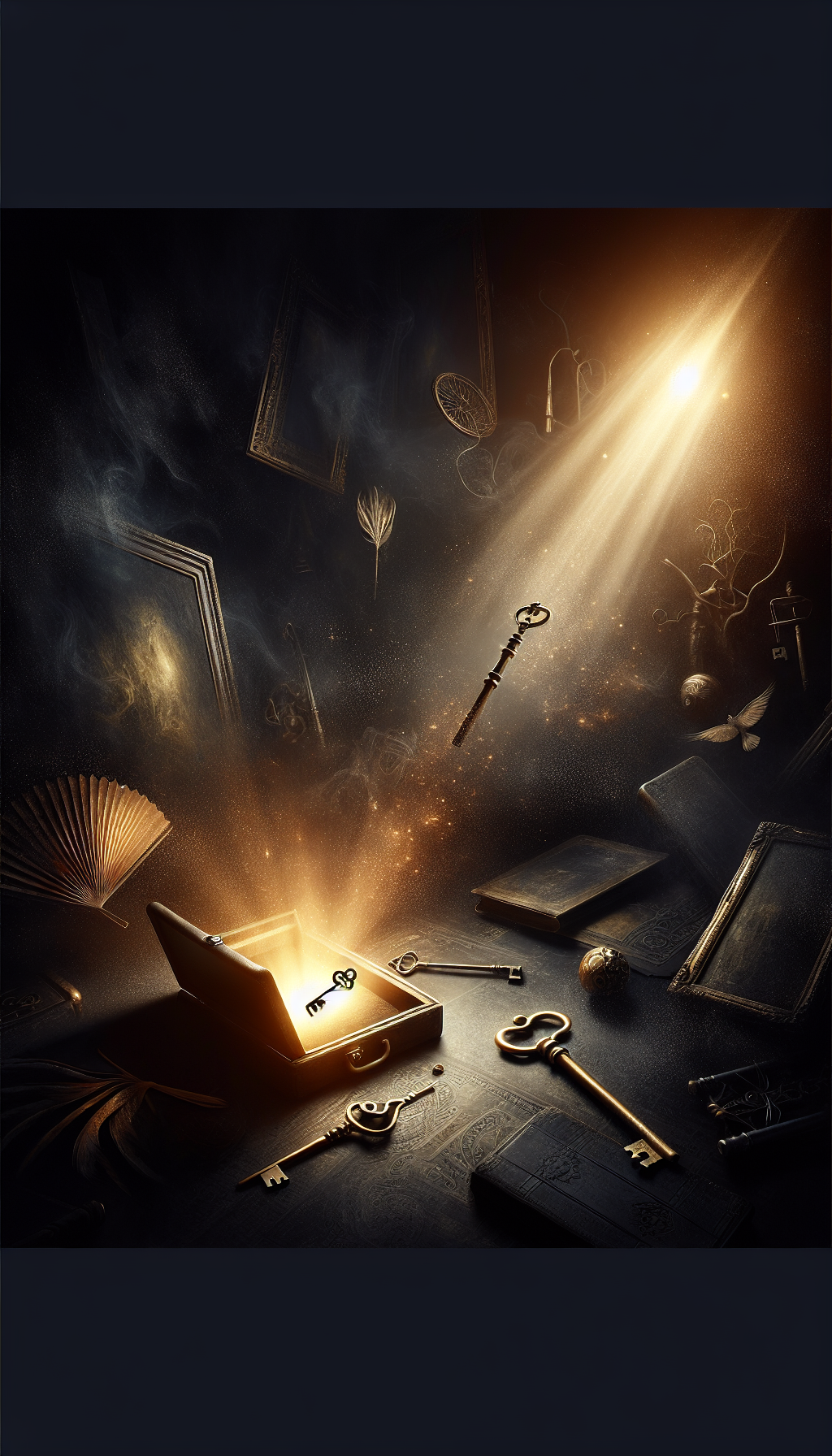Coming Out Carolyn Don Bronze Sculpture
Bronze sculpture sits at a useful intersection of fine art and decorative arts, where materials science, traditional foundry practice, and the art market all converge. If you’re evaluating a bronze titled “Coming Out” signed “Carolyn Don,” this guide walks through practical steps for identification, condition assessment, and valuation—aimed squarely at collectors, appraisers, and enthusiasts who want to make confident decisions.
Overview: Title, Attribution, and Scope
“Coming Out” is a title encountered in the sculpture trade across different artists and eras. Works bearing this title and signed “Carolyn Don” surface periodically, usually as limited-edition lost-wax castings in a contemporary or late 20th-century figurative idiom. Because the secondary market for bronzes can conflate titles and signatures, your first task is to confirm what you have:
- Title: Confirm whether “Coming Out” appears on a label, invoice, certificate, or exhibition listing. Titles sometimes change between studio and sales literature.
- Signature: Verify that the signature reads “Carolyn Don,” and document its placement (cast into bronze, chased into the wax before casting, or incised/engraved post-cast).
- Editioning: Most modern bronzes are in limited editions; look for an edition fraction (e.g., 4/25), artist proofs (AP or EA), or HC (Hors Commerce) notations.
- Foundry: Identify the foundry name or mark, if present. This context informs casting quality and production chronology.
Because “Carolyn Don” is not a universally standardized name across art reference databases, treat attribution carefully: triangulate signature style, edition practices, and foundry marks against any literature, gallery records, or prior sales documents you can access.
Identifying Authentic Castings: Signatures, Foundry Marks, and Edition Numbers
Fundamental authentication work on a bronze centers on three pillars—signature, editioning, and foundry.
Signature types:
- Integral cast signature: Usually produced when the artist’s signature is in the original model or in the wax. The lettering should display crisp, three-dimensional edges consistent with casting.
- Incised signature post-cast: Often fine-line engraving; edges can look brighter if polished. Under magnification, look for drag lines typical of a stylus or burin.
- Location: Common areas include the base rim, back of the figure, or discrete panel. Photograph with raking light and macro focus.
Edition numbers and notations:
- Fraction format (e.g., 7/25): Indicates piece 7 from a total edition of 25.
- AP (Artist Proof) or EA (Épreuve d’Artiste): Typically 10% of the edition, not always numbered fractionally.
- HC (Hors Commerce): Non-commercial copies retained for the studio or promotional use; sometimes valued similarly to APs.
- Roman numerals or letter suffixes are not unusual; consistency across known examples matters.
Foundry marks:
- Stamp, cartouche, or chiseled text indicating the foundry’s name, city, or logo.
- Placement varies: base edge, underside, or discrete panel on the sculpture.
- Qualitative indicator: Well-regarded fine-art foundries tend to produce consistent wall thickness, crisp detail, and refined chasing. If you identify the foundry, research its reputation and typical edition sizes for comparables.
Cross-verify these details with any provenance documentation. If multiple examples of “Coming Out” by Carolyn Don exist, compare letterforms and the edition layout against another verified example to rule out later aftercasts or deceptive recasts.
Materials, Casting, Patina, and Base
Understanding how the object is made helps you evaluate quality and condition properly.
Casting method:
- Lost-wax (cire perdue) is standard for modern limited editions. Expect a sprue-removal and chased surface, with evidence of hand-finishing beneath patina.
- Sand casting is less common for detailed figurative works; it tends to show different surface texture and seam behavior.
Alloy and weight:
- True art bronzes are copper–tin alloys with possible additions of zinc or lead. Weight should feel substantial for size. If it seems surprisingly light, consider wall-thickness or mixed materials; if suspiciously light and magnetic, test carefully—solid bronze is non-magnetic.
Patina:
- Chemical patinas (liver of sulfur, cupric nitrate, ferric nitrate) develop browns, greens, or reds; application should flow with the sculpture’s form and details.
- Natural oxidation versus applied patina: Modern studio bronzes usually use applied patinas fixed with wax or lacquer.
- Uniformity: Look for transitions, depth, and glow rather than flat paint-like color. Brush marks or pooling may indicate a later over-patina or paint.
Base and attachments:
- Common bases: polished stone (marble, granite), hardwood, or integrated bronze socle.
- Hardware: Screws or threaded rods should be tight and free of corrosion. Original felt or pads may be present.
- Labels: Gallery labels or inventory stickers can help trace provenance; photograph and document before removal.
Record precise measurements (H x W x D) both including and excluding the base, and note weight for shipping and insurance. For valuation, size correlates strongly with market interest—monumental or larger table-top bronzes often command higher prices.
Condition Assessment and Conservation Priorities
Condition can account for large swings in value. Use consistent, methodical inspection:
Surface integrity:
- Check high points and protrusions for rubs, losses to patina, or localized bright bronze from handling.
- Look for microcracks at weld seams or thin sections; hairline cracks often lurk around fingers, ankles, or tight curves.
Corrosion and “bronze disease”:
- Green corrosion is not automatically harmful; stable patina often includes green. Powdery, light-green areas that recur after cleaning may indicate chloride corrosion.
- Avoid aggressive polishing; it permanently alters patina and value.
Past repairs:
- Heat tints or slightly mismatched patina can reveal brazed repairs.
- Pinning at breaks (e.g., limbs) may leave discrete holes or plugs. Ask whether repairs were done pre- or post-cast; studio repairs are generally less value-negative.
Coatings:
- Waxes age and turn hazy; gentle re-waxing with microcrystalline wax can restore sheen if done correctly.
- Old lacquers can craze or yellow; removal is a conservator’s job.
Base condition:
- Chips to stone bases or delamination of wood veneers are common. While bases are replaceable, original bases maintain integrity and value.
When in doubt, consult a metals conservator. For any significant bronze, avoid DIY chemical cleaning; the risk to patina is real and often irreversible.
Market and Valuation Factors for “Coming Out” by Carolyn Don
Valuation weighs tangible and intangible factors that vary with the artist’s market presence.
Artist market and recognition:
- Documented exhibition history, reviews, or gallery representation generally strengthens value.
- If “Carolyn Don” lacks a deep auction record, private sales and gallery comparables become more important.
Edition size and number:
- Smaller edition sizes (e.g., out of 10 or 12) are typically more desirable than larger ones (e.g., out of 100).
- Early numbers in a small edition can attract a modest premium, especially if casting quality diminishes later in the run.
Subject matter and pose:
- Figurative works with clear narrative appeal usually sell better than abstracted forms without context, but quality of modeling and emotional resonance matter most.
- Titles like “Coming Out” may signal a narrative of emergence or transformation; if the subject aligns with collector interests, demand may rise.
Scale and presence:
- Larger works command higher shipping and insurance costs but often realize better prices due to visual impact.
- Table-top bronzes compete in broader decorative markets; scale consistency with interior display can influence demand.
Condition:
- Untampered original patina and no repairs carry a clear premium.
- Professional conservation, if disclosed, is acceptable; amateur polishing materially depresses value.
Provenance:
- Direct-from-artist invoices, gallery receipts, and exhibition labels provide confidence. In contested attribution scenarios, paperwork can be decisive.
For appraisal, triangulate:
- Descriptive comparables: same artist, similar size, similar edition, similar subject.
- Quality comparables: different subject but same period and foundry.
- Market context: overall demand for contemporary figurative bronzes of similar caliber.
Assign a value range, not a single figure, reflecting condition and market volatility. If you cannot locate robust comps for “Carolyn Don,” consider a cost-based floor (what galleries charged originally for similar works) and adjust for age, reputation trajectory, and condition.
Provenance, Documentation, and Due Diligence
Paper trails elevate confidence:
- Gather any invoices, certificates, emails, or letters from the artist or gallery. Note dates, edition number, and foundry information.
- Correlate signatures and edition numbers on the bronze with documentation. Discrepancies require explanation.
- Record chain of ownership. Even simple self-declarations (affidavits) help when originals are missing.
- Photographically document the bronze: overall shots from four sides, macro of signature, edition, foundry mark, condition issues, base underside, and any labels.
If uncertainties persist—especially around artist identity—consider:
- Querying known galleries or dealers who have handled works by someone signing “Carolyn Don.”
- Commissioning a short condition and materials report from a conservator, which may support appraisal and resale.
Quick Appraisal Checklist
- Verify title, signature (“Carolyn Don”), edition fraction, and any AP/EA/HC notations.
- Locate and photograph the foundry mark; note placement and exact inscription.
- Measure H x W x D and weight; record with and without base.
- Inspect patina under raking light; note rubs, streaks, overpaint, or inpainting.
- Check for cracks at joins and extremities; look for color mismatches indicating repairs.
- Examine underside and attachments; confirm hardware integrity and originality of base.
- Document provenance with invoices, labels, and correspondence; reconcile with markings on the bronze.
- Identify comparable sales or gallery offerings for similar works by the same artist.
- Avoid polishing; if cleaning is required, consult a conservator and use microcrystalline wax if appropriate.
- Package for transport using foam, corner protection, and rigid boxing; never allow bronze to contact stone base during transit.
Display, Care, Insurance, and Shipping
Bronze is durable, but display and handling choices affect longevity and value.
Display:
- Avoid direct sunlight if the patina is lacquered; UV can age coatings faster.
- Maintain stable indoor humidity; avoid marine environments that accelerate chloride corrosion.
Routine care:
- Dust with a soft, clean microfiber cloth. If dull, consider a light application of museum-grade microcrystalline wax; buff gently once dry.
- Never use metal polishes; they strip patina and devalue the piece.
Insurance:
- Insure at current fair market value with a schedule listing artist, title, edition, year (if known), and dimensions.
- Update values every 3–5 years or when market conditions change.
Shipping:
- Remove the bronze from a stone base if the design allows and you’re experienced; otherwise immobilize both together. Cushion to prevent contact between bronze and stone.
- Double-box with rigid foam. Mark orientation and “Do Not Stack.” Consider a fine art shipper for larger works.
Frequently Asked Questions
Q: I can’t find any auction results for “Coming Out” by Carolyn Don. How do I value it? A: Use a layered approach: confirm edition size and foundry, then locate gallery retail history for the artist or for comparable contemporary bronzes of similar scale and quality. Adjust for condition and documented provenance. If direct comps remain scarce, consider engaging a specialist appraiser who can weigh private-sale comparables and regional demand.
Q: The patina has uneven shiny spots. Is that damage? A: Shiny spots on high points often indicate handling wear that has burnished the wax layer. If the underlying patina is intact, a conservator can sometimes even the sheen with a careful clean and re-wax. Avoid polishing, which can cut into the patina and reveal bright metal.
Q: My bronze is numbered “AP.” Is it worth more than a standard edition piece? A: Artist proofs can command a modest premium, especially if the artist’s market is strong or if APs are scarcer than standard edition pieces. Quality and condition still dominate; treat AP status as a positive but secondary factor.
Q: There’s no foundry mark. Should I be concerned? A: Not all bronzes carry a foundry stamp, particularly small studio productions. Absence isn’t a red flag by itself, but it places more emphasis on signature analysis, editioning, provenance, and casting quality. If the piece shows crisp details, sound joins, and consistent patina, it may still be a legitimate studio casting.
Q: Can I clean green corrosion myself? A: Exercise caution. Stable green patina is often intentional. Powdery, active corrosion needs professional assessment. DIY chemical treatments can create blotches and value loss. When in doubt, consult a metals conservator before any intervention.
By focusing on clear identification, measured condition analysis, and disciplined market comparison, you can appraise a “Coming Out” bronze signed “Carolyn Don” with confidence. Keep meticulous notes and images, preserve original surfaces, and let documentation support your conclusions. In a sector where subtle differences matter, methodical work is your best advantage.



